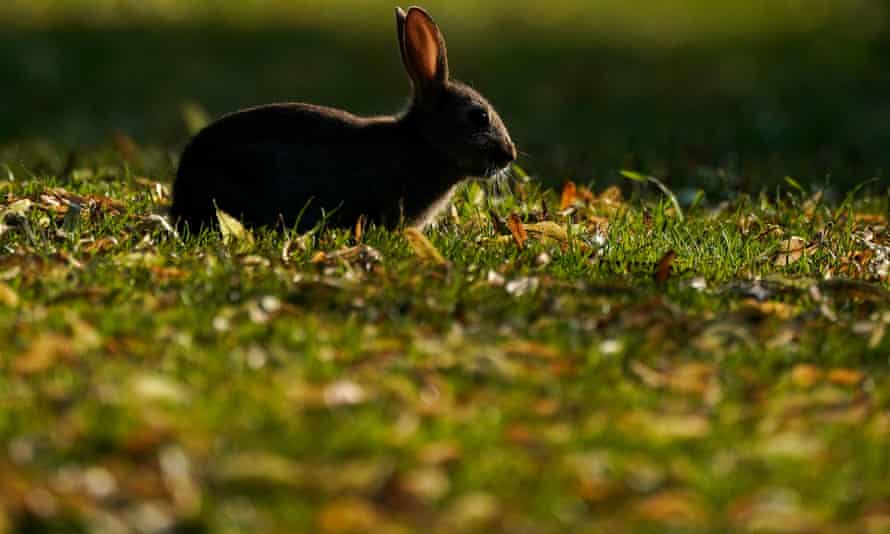Specieswatch: run rabbit – why they are disappearing from the countryside
They are blamed for damage to crops but numbers are falling due to predators and disease

The European rabbit (Oryctolagus cuniculus) is perhaps the most often seen mammal in the British countryside. It is also a favourite food for foxes, badgers, weasels, stoats and various birds of prey, especially buzzards, whose numbers often fluctuate depending on rabbit populations.
Yet the rabbit is classed as an invasive species. It was first imported by the Romans from its native habitat in the Iberian peninsula in about AD43. It did not thrive and was reintroduced again by the Normans before becoming established in England. It was so valued as a winter food source that the landed gentry had to have special permission to create a carefully guarded warren and the peasants were kept well away.
Eating rabbits eventually went out of fashion and as recently as last month the Guardian was quoting a scientific paper describing them as one of the country’s most costly invasive species because of the damage to crops.
However, the rabbit is not having a good time of it. Numbers are falling rapidly, not just because so many other creatures want to eat them, but because of recurring myxomatosis and rabbit haemorrhagic disease. This furry vegetarian, loved by children, that lives in and defends family territories still seems so familiar – yet it is vanishing from some country areas.